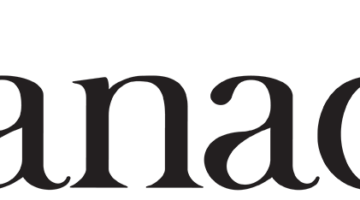Technology and standards development across interrelated frontiers of innovation are converging to allow for a fundamentally new healthcare scenario, and the potential benefits are far-reaching. The e-health capability that is being built out in healthcare around the world stands to better position providers globally to serve rapidly aging populations, achieve new cost efficiencies throughout their processes and undertake a revolutionary shift from responsive, crisis-driven healthcare to preventive care and wellness monitoring.
Through e-health—in which more types of patient data are securely shared among networks of care, sometimes even in real time—healthcare providers are equipped to more intimately partner with patients in, for example, preventive and post-operative care and chronic disease monitoring and management. E-health also can enable healthcare providers to more affordably reach remote and under-served communities around the world. Furthermore, the ability to gather, process and analyze unprecedented volumes and varieties of quantitative and qualitative data on patients could greatly enhance the healthcare communities’ ability to detect and quell disease outbreaks and initiate and manage preventive services across populations.
A confluence of technology development across multiple industries and standards rollout across complementary organizations is helping drive the emergence of e-health globally.

With the Rise of AI, What IP Disputes in Healthcare Are Likely to Emerge?
Munck Wilson Mandala Partner Greg Howison shared his perspective on some of the legal ramifications around AI, IP, connected devices and the data they generate, in response to emailed questions.
There are innovations that are specific to healthcare. For example, the IEEE Standards Association (IEEE-SA) is facilitating the buildout of a suite of market-driven standards supporting interoperable communications among both traditional medical devices and personal health devices; the expanding IEEE 11073™ standards family is helping healthcare product vendors and integrators introduce interoperable devices and systems for disease management, health and fitness and independent living. IEEE standards also address areas of e-health innovation, such as “body-area networking” (IEEE 802.15.6™ “Standard for Local and metropolitan area networks – Part 15.6: Wireless Body Area Networks” ) and emergent techniques for blood-pressure measurement (IEEE 1708™ “Standard for Wearable Cuffless Blood Pressure Measuring Devices”).
Innovation in a range of related technology areas, too, will have significant impact on e-health. Secure Internet connectivity, cloud computing, the Internet of Things (IoT) and the smart grid are among the fervent areas of development that are helping the vision of next-generation e-health crystalize globally.
For example, IEEE 802.3™ “Standard for Ethernet” and IEEE 802.11™ (1) are among the foundational standards that have proven so critical to the proliferation of the Internet. E-health and even traditional medical-device communications increasingly rely on the standards-based communications and data exchange, as opposed to proprietary networks.
Cloud computing is another of the mechanisms that will enable patient data to be securely and cost-efficiently collected, shared and stored for e-health, but one of today’s hurdles to achieving cloud computing’s tremendous, long-term promise is enabling different clouds to work together. Globally open standards development is helping level that hurdle. Among the examples are IEEE P2301™ “Draft Guide for Cloud Portability and Interoperability Profiles (CPIP),” which is under development to assist development, construction and usage of standards-based cloud computing products and services, and IEEE P2302™ “Draft Standard for Intercloud Interoperability and Federation (SIIF),” which is being crafted to define cloud-to-cloud interoperability and federation.
The IoT is a global system that could eventually comprise trillions of connected devices and applications, creating more useful information than ever before. The IoT could help enable a scenario in which devices worn or even embedded in the body could communicate wirelessly with applications in the cloud to enable breakthrough e-health services. Standards development for the IoT is rapidly paced around the world; IEEE P2413™ “Draft Standard for an Architectural Framework for the Internet of Things (IoT),” for example, is under development to promote cross-domain interaction, aid system interoperability and functional compatibility.
Similarly, standards are integral to the globally joined effort to overlay two-way, end-to-end network communications and control across next-generation facilities for electricity delivery. The smart grid is key to the e-health future, in which sensors could be embedded around a house, enabling automatic sharing of data across multiple services (hospital, emergency, etc.) IEEE has more than 100 standards and standards in development with relevance to the smart grid.
Because no single standards organization could possibly develop, refine and maintain all of the varied standards underpinning e-health, collaboration among standards organizations across pre-standards research, formal standards development and market implementation is essential to cost-effective and efficient innovation. More and more diverse global collaborators continue to join the e-health standards movement, building upon one other’s work and maximizing the return on global industry’s investment in standards activities. The IEEE-SA engages in global collaboration with a range of other SDOs and healthcare organizations, in order to meld varied expertise to the benefit of patients, healthcare providers and industry alike.
References
1. IEEE 802.11™ “Standard for Information technology–Telecommunications and information exchange between systems Local and metropolitan area networks–Specific requirements Part 11: Wireless LAN Medium Access Control (MAC) and Physical Layer (PHY) Specifications”














